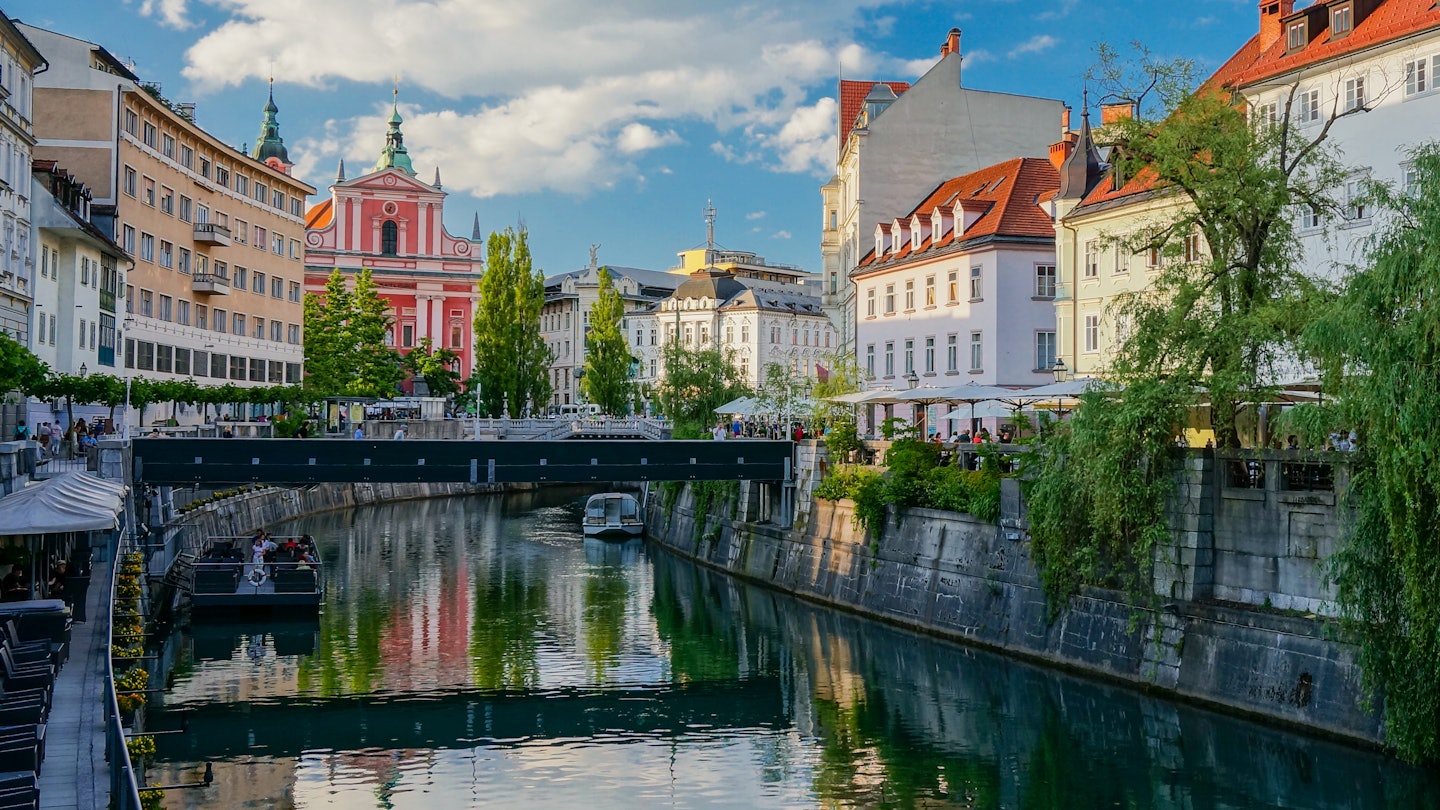
The route starts in Ljubljana ©Pierre-Olivier Fortin/500px
Slovenian tourism continues to redefine the concept of responsible development by adding another community-based tourism itinerary to its repertoire. The Slovenia Green Capitals route, which launches this month, visits the Central European country’s three “capitals”: Ljubljana, the administrative and cosmopolitan heart; Kočevje, the natural jewel; and the Bela Krajina region, the cultural hub.
Slovenia Green Capitals was designed to provide a new way to discover the nation’s bevy of sustainability-focused options in its growing number of responsible-tourism-minded destinations. Not a pre-packaged tour, the new product equips independent travelers with a map as well as suggested accommodations, restaurants, and activities. Developed by members of the country’s Green Consortium, with the support of the Slovenian Tourist Board, the route only stops in cities, towns, and villages certified through the Slovenia Green brand and tourism strategy. Qualifying locales meet strict criteria for certification, which includes environmental considerations as well as benchmarks such as work conditions for employees and preparedness for the future of the industry.
Starting in Ljubljana, travelers choose from an assortment of organized tastings, historic sites, museums, or perhaps just stroll along the capital city straddling the Ljubljanica River. One suggested activity is the Moustache Tour, which follows the lives of three giants of architecture, art, and letters.

Approximately 65 kilometers to the south, the route lands in Kočevje, the hub of the Kočevsko region, famed for its Krokar primeval beech forest — Unesco-inscribed and part of Natura 2000 — and its embarrassment of wildlife riches. Exploration here is best done with a safe and guided search for animal tracks followed by bear-watching in specially-designed stands in the woods.
The final leg of Slovenia Green Capitals, around 60 kilometers to the east, heads to the Bela Krajina region, which hugs the Kolpa River and the border with Croatia. Known as the country’s cultural headquarters because of the mix of ethnicities, languages, and religions, this is also a vortex for great food and wine. A wine and food tour with local guides from Bravina, which also organizes sheep farm visits for families, soaks up the areas sights, smells, and tastes.

Opening just in time for peepers to catch the changing leaves and as winemakers finish up the year’s harvest in the crisp fall air, the Slovenia Green Capitals route can be accessed by car, train, bicycle, or even hiking. Wedged between the Alps and the Adriatic, Slovenia, which continues to set the example for tourism development, has made a point of adding to its growing number of sustainable routes even as world travel has slowed to a crawl.
“The idea here, as with our other routes, is to open the possibilities with new themes that widen horizons,” says Jan Klavora, one of the designers of the Slovenia Green Capitals. Klavora works with Good Place, an NGO and member of the country’s Green Consortium. “We want to increase visitors’ independence by increasing the number of resources and types of activities that a growing number of travelers demand, namely experiences that combine both authenticity and responsibility.”
You might also like:
Slovenia's new green cycling tour takes you to wineries and national parks
Treat yourself to a chocolate massage at this luxurious glamping village in Slovenia
Six reasons to visit Slovenia, a gem at the heart of Europe







